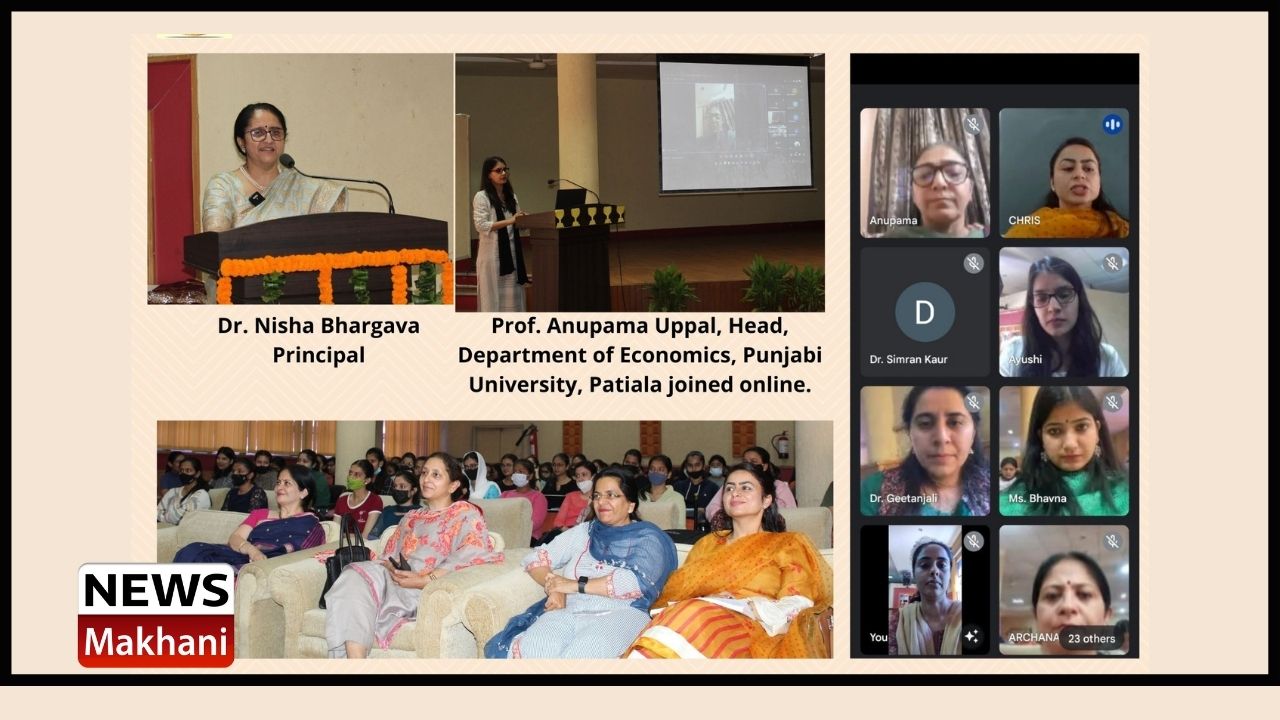CHANDIGARH 05 -APRIL-2022
The Postgraduate Department of Economics at Mehr Chand Mahajan DAV College for Women, Chandigarh organised a discourse on ‘Income Inequalities in India: Pre and Post Pandemic Era’ in blended mode. Prof. Anupama Uppal, Head, Department of Economics, Punjabi University, Patiala, was the resource person for this discourse. Inaugurating the session, Principal Dr. Nisha Bhargava gave an insight into income inequality in India as she quoted the World Inequality Report 2022, MPI Report and NITI Aayog Report on inequality. She further stated that income inequality, which is of various types such as social, political and gender, is a hindrance in the path of economic growth.
Pointing out the fact that inequality has risen over time, Prof. Anupama discussed in detail the “K shape” movement in income in India that creates a divergence as well as a class divide. She quoted the data of PRICE and ICE, which represents a deep class divide in India. While comparing the pre and post pandemic era, Prof. Anupama highlighted that the sales fell but profit soared during the pandemic because government helped corporate sector to get higher profits by tax concessions but the working class had to pay more of the indirect taxes. She presented the time series analysis of real per capita national income growth in India, stating that top 10% and top 1% population experienced a higher growth rate in income and bottom 50% population faced a decline in income after 1989-99 as a proportion of the total population. She further added that this led to higher levels of inequality in income and wealth in India. Prof. Anupama enumerated the challenges confronted by the Indian economy reckoning the macro economic scenario. She concluded on a positive note as she said that India should try to adapt to the social movement, and called for government action like progressive taxation. The discourse was well received and appreciated by the 345 participants as they got immensely significant insights into the past, present and the future issues and solutions to the inequality problems of the Indian economy.

 हिंदी
हिंदी






